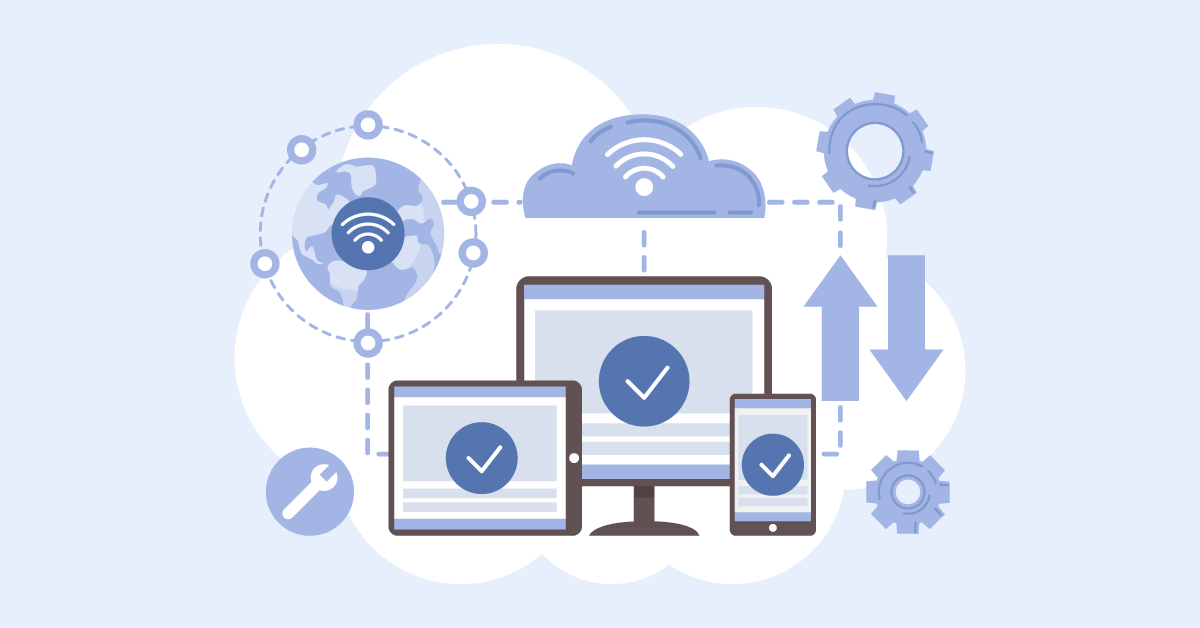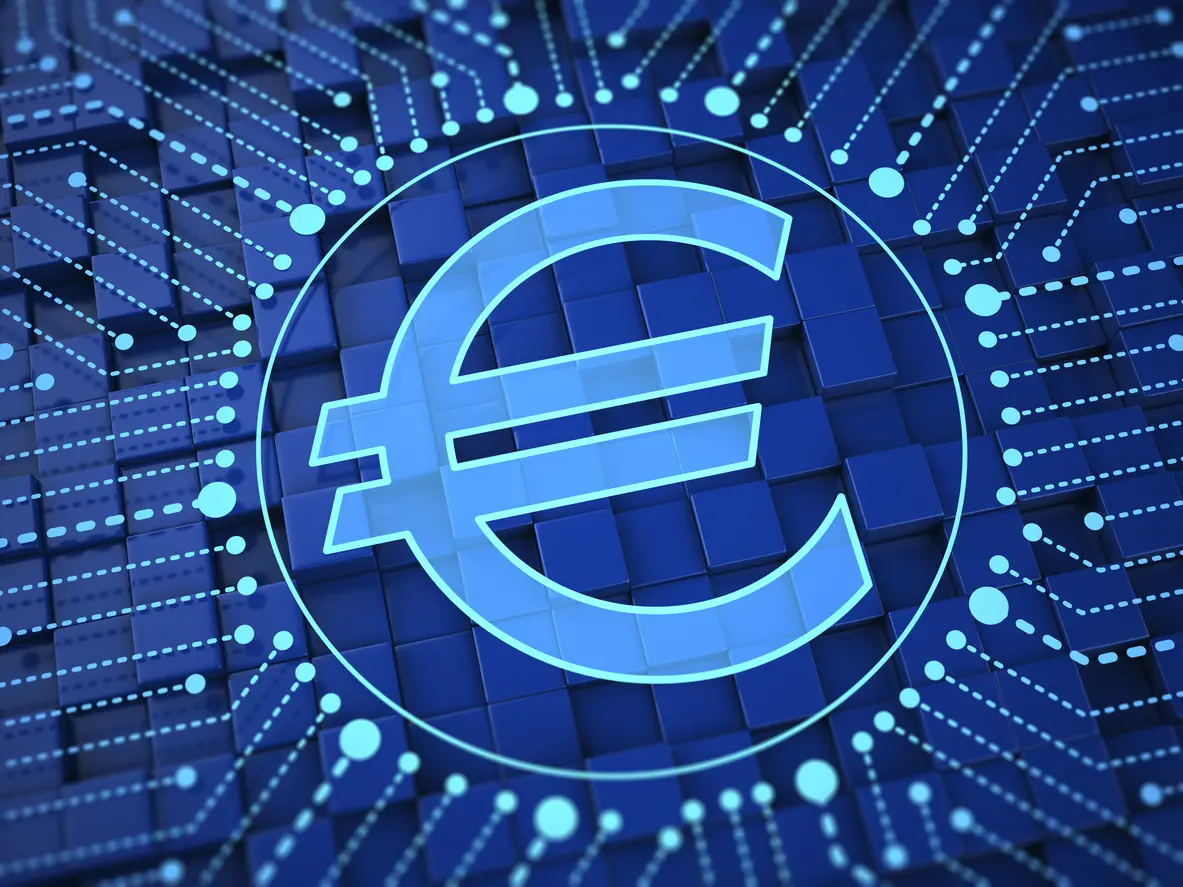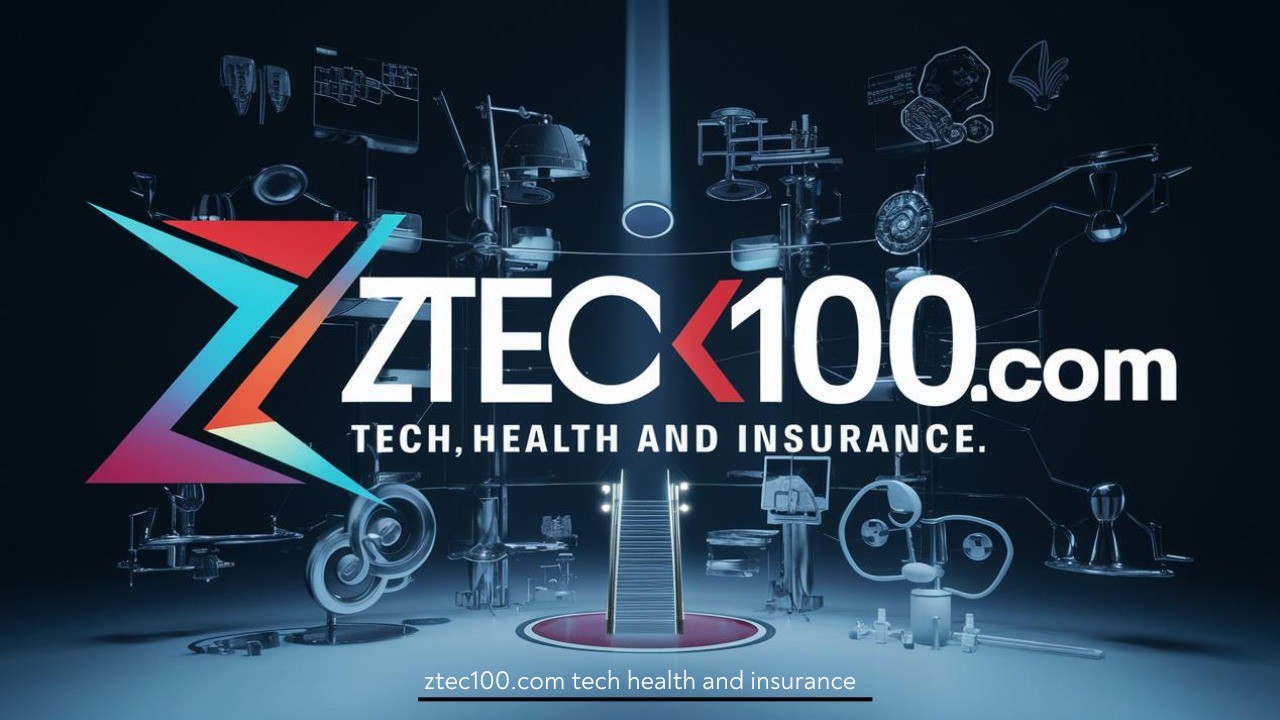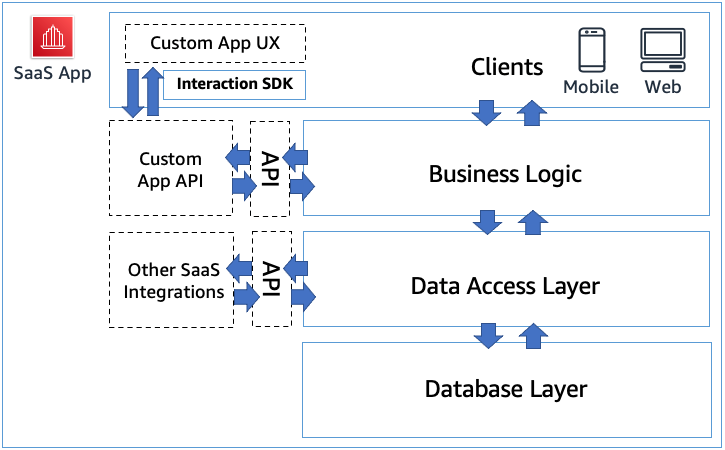Tech
SaaS Integration: Cloud-Based Software

The process of linking various SaaS apps and ensuring they function seamlessly is known as SaaS integration. Integration is necessary to optimize the advantages of each SaaS service, facilitate data sharing, and optimize workflows. This post will discuss the value of SaaS integration, its difficulties, and the best methods for integrating SaaS systems.
Businesses increasingly depend on software (SaaS) to increase productivity, collaborate better, and streamline operations in the current digital era. On-premise solutions can lack the flexibility and scalability that SaaS apps provide. However, the difficulty of integrating these diverse systems grows as businesses use more SaaS products to satisfy different business objectives.
Understanding SaaS Integration
What is SaaS Integration?
Integrating different cloud-based software programs so they can interact and function as a single, cohesive system is known as SaaS integration. Businesses may automate procedures, cut down on human labor, and obtain insights from a comprehensive picture of their operations thanks to this connectivity, which permits data to move quickly between various SaaS products.
Why is SaaS Integration Important?
Businesses that depend on several cloud-based apps must integrate SaaS solutions. Organizations may have problems with data silos, ineffective workflows, and erroneous reporting if there is improper integration. Businesses may ensure all their tools are in sync by integrating SaaS services, improving decision-making, and boosting productivity.
- Example: By integrating CRM, marketing automation, and customer care SaaS solutions, a business can guarantee that client data is consistent across all platforms and provide a more effective and individualized customer experience.
Common Challenges in SaaS Integration
Data Silos
The formation of data silos is among the biggest obstacles to SaaS integration. When distinct SaaS apps store data separately without exchanging information with other systems, this is known as a data silo. This may result in redundant data, discrepancies, and trouble obtaining necessary information.
- Example: A sales team utilizing a CRM platform can miss out on cross-selling and upselling opportunities if they cannot access customer interaction data in a different customer care system.
Integration Complexity
Integrating several SaaS apps might be unsafe because of their complexity, particularly for companies with a diversified software stack. Establishing seamless connections between SaaS applications can be difficult because each may have its data format, security protocols, and API (application programming interface).
- Example: Custom development work may be necessary when integrating a cloud-based supply chain management application with a SaaS-based ERP system to guarantee that both systems can interact successfully.
Data Security and Compliance
Businesses must ensure that data security and compliance requirements are upheld when integrating SaaS apps. This is particularly important when working with sensitive data, such as financial records or client information. All data that is moved across systems needs to be encrypted and compliant with applicable laws.
- Example: When a healthcare provider integrates a SaaS-based patient engagement platform with its electronic health record (EHR) system, it must ensure that data sharing complies with HIPAA rules.
Best Practices for SaaS Integration
Adopt an API-First Strategy
An API-first approach is necessary for SaaS integration to be successful. Several software systems can interact with one another through APIs, exchanging data and automating procedures. Businesses should prioritize SaaS products with robust and comprehensive API documentation.
- Example: By integrating a SaaS-based email marketing platform with their CRM system using APIs, a marketing team may leverage real-time data to personalize email campaigns and automatically sync client information.
Leverage Integration Platforms
SaaS integration management is made more accessible with the help of Integration Platforms as a Service (iPaaS). These platforms make it easier to integrate numerous SaaS apps by providing pre-built connectors, workflow automation, and monitoring tools.
- Example: By connecting its accounting, CRM, and analytics platforms, a financial services organization may guarantee smooth data flow by utilizing an iPaaS solution such as MuleSoft.
Prioritize Data Governance
SaaS integration success depends on effective data governance. Businesses must establish clear policies for data management, covering compliance, security, and quality. This guarantees the accuracy, security, and accessibility of data throughout all integrated systems.
- Example: To guarantee that inventory data is correct and current across all channels, a retail company connecting its point-of-sale (POS) system with its inventory management SaaS platform needs to apply data governance regulations.
SaaS Integration Use Cases
CRM and Marketing Automation Integration
One prominent use case for SaaS integration is the combination of marketing automation and CRM platforms. With the help of this interface, companies may use real-time customer data from their CRM system to develop more individualized marketing campaigns.
- Example: A marketing automation tool like HubSpot can be coupled with a SaaS-based CRM platform like Salesforce to automatically sync customer data and launch customized email campaigns based on customer behaviour.
ERP and Supply Chain Management Integration
Integrating supply chain management with ERP systems Businesses can increase supply chain visibility and streamline operations with the help of SaaS solutions. This fulfilment can track order fulfilment, supplier performance, and real-time inventory.
As an illustration, a manufacturing business can enhance supplier engagement and streamline procurement procedures by integrating its cloud-based ERP system with a supply chain management platform like SAP Ariba.
HR and Payroll Integration
Payroll processing accuracy and efficiency are ensured, and personnel administration is simplified by integrating HR and payroll SaaS apps. Thanks to this connection, HR departments can now handle payroll, benefits, and employee data from a single platform.
- Example: As an illustration, a business that uses a SaaS-based HR platform, such as Workday, can integrate it with a payroll system, such as ADP, to precisely execute payroll and automatically sync employee data.
The Role of Middleware in SaaS Integration
What is Middleware?
Middleware serves as a conduit for data sharing and communication between several apps. Middleware can make linking several SaaS apps regarding SaaS integration more accessible, mainly when straight API integration is impractical.
Benefits of Using Middleware
Middleware offers several benefits for SaaS integration, including:
- Simplified Integration: Middleware can handle the complexities of connecting different SaaS applications, reducing the need for custom development.
- Data Transformation: Middleware can transform data between different formats, ensuring system compatibility.
- Scalability: Middleware can scale with the business, allowing for the integration of additional SaaS applications as needed.
- Example: A logistics company using middleware to integrate its transportation management system (TMS) with its warehouse management system (WMS) can ensure that data flows smoothly between these platforms, improving operational efficiency.
Future Trends in SaaS Integration
AI-Driven Integration
Artificial intelligence (AI) will significantly impact SaaS integration in the future. The act of mapping data fields, recognizing integration patterns, and forecasting possible problems can be automated by AI-driven integration platforms, negating manual intervention.
- Example: a SaaS application’s API changes may be automatically detected by an AI-powered iPaaS solution, which would then update the integration to minimize downtime and guarantee data continuity.
The Rise of Low-Code/No-Code Integration Tools
Non-technical consumers are finding SaaS integration easier because of low-code and no-code platforms. These solutions eliminate the need for coding by enabling users to develop connections using drag-and-drop capabilities and visual interfaces.
- For example, a marketing manager without programming knowledge can automate lead nurturing procedures by integrating their email marketing tool with their CRM system using a no-code platform like Zapier.
Blockchain and Decentralized Integration
Decentralized SaaS integration, in which data is safely transferred across numerous nodes without depending on a central authority, is possible using blockchain technology. This method can improve SaaS integration data security and transparency.
- Example: A blockchain-based middleware solution could integrate a SaaS-based procurement platform with several suppliers and guarantee that every transaction is safely and transparently recorded on a distributed ledger.
Conclusion
Businesses hoping to get the most out of their cloud-based software solutions must integrate SaaS. Through the resolution of obstacles like data silos, intricate integration, and security worries, enterprises can establish a unified and effective technology stack that stimulates both efficiency and creativity.
Successful SaaS integration requires developing strong data governance policies, utilizing iPaaS technologies, and adopting best practices, including API-first techniques. As technology advances, businesses can anticipate additional chances to improve cooperation and streamline operations using AI-driven, low-code, and blockchain-enabled integration solutions.
FAQs
1. What is integration for SaaS? The process of integrating various cloud-based software programs to guarantee seamless operation, facilitate data sharing, and automate workflows is known as SaaS integration.
2. What is the significance of SaaS integration for enterprises? For businesses to prevent data silos, increase productivity, and make sure all software tools are in sync and supporting business objectives, SaaS integration is essential.
3. What are the primary obstacles to integrating SaaS? Data silos, complex integration, and guaranteeing data security and compliance during the integration process are the primary obstacles.
Finance
Digitale Munteenheid (Digital Currency): A Complete Guide

In recent years, digital currencies have emerged as a revolutionary innovation in the global financial landscape. Also referred to as “digitale munteenheid” in Dutch, digital currencies represent a digital form of money that is designed to function as a medium of exchange, just like traditional currencies.
However, unlike physical money (cash), digital currencies exist only in digital form and are typically transferred electronically. As we move further into the digital age, the role of digital currencies continues to expand, influencing how businesses, governments, and individuals engage with financial systems. This article explores what digital currencies are, how they work, their advantages and disadvantages, and their potential to reshape global finance.
What Is Digitale Munteenheid (Digital Currency)?
Digital currency refers to any form of currency that exists solely in digital or electronic form. Unlike traditional fiat currencies such as the dollar, euro, or yen, which are issued by governments and stored in physical form (notes and coins), digital currencies are intangible. They can be stored on digital wallets and transferred via online networks.
Types of Digitale Munteenheid (Digital Currencies)
- Cryptocurrencies: These are decentralized digital currencies, powered by blockchain technology. Bitcoin, Ethereum, and Litecoin are prominent examples. Cryptocurrencies are not controlled by any central authority and use cryptography for secure transactions.
- Central Bank Digital Currencies (CBDCs): Governments and central banks are exploring the idea of creating their digital currencies, backed by the state. Examples include China’s digital yuan and Sweden’s e-krona.
- Virtual Currencies: These are digital currencies typically used within specific ecosystems, such as online gaming platforms or virtual worlds. They often have no value outside their respective platforms.
- Stablecoins: A form of cryptocurrency designed to minimize volatility by being pegged to a stable asset, such as a fiat currency (e.g., Tether) or commodities like gold.
How Digital Currencies Work
Digital currencies operate through a combination of digital wallets, cryptography, and a network of computers that ensure the secure transfer of value. Here’s how a typical transaction works:
- Digital Wallet: Users store their digital currencies in digital wallets, which can be software-based (on a computer or smartphone) or hardware-based (physical devices designed to store digital currency securely).
- Blockchain: Most digital currencies, particularly cryptocurrencies, use blockchain technology—a decentralized ledger that records all transactions across a network of computers. Blockchain ensures transparency, security, and immutability of transaction records.
- Public and Private Keys: To transfer digital currency, users need a public key (similar to a bank account number) and a private key (a password that gives access to the currency). The transaction is verified and added to the blockchain by miners or validators, depending on the consensus mechanism.
- Decentralization: Many digital currencies, especially cryptocurrencies, are decentralized, meaning they are not controlled by a single entity (like a government or bank). Instead, they rely on peer-to-peer networks.
The Advantages of Digital Currencies
- Speed and Efficiency: Digital currencies allow for nearly instant transactions, eliminating the need for intermediaries such as banks. This can be particularly beneficial for cross-border payments, which traditionally take days to process.
- Lower Transaction Costs: Since digital currencies cut out intermediaries, they often come with lower transaction fees, making them an attractive option for businesses and consumers alike.
- Accessibility: Digital currencies provide financial access to those who may not have access to traditional banking systems, such as individuals in developing countries or those without a credit history.
- Security: Cryptocurrencies, in particular, use advanced cryptographic techniques to secure transactions, reducing the risk of fraud or theft.
- Transparency: Blockchain technology ensures that all transactions are recorded and can be viewed by anyone on the network, fostering transparency.
- Decentralization: The lack of a central authority means that digital currencies cannot be manipulated by governments or central banks, making them an attractive option for people who distrust traditional financial systems.
The Challenges of Digitale Munteenheid “Digital Currencies”
- Volatility: Cryptocurrencies are notorious for their price volatility. For instance, Bitcoin’s value has seen massive fluctuations over the years, making it a risky asset for investment and use as a currency.
- Regulation: The legal and regulatory framework for digital currencies is still evolving. Different countries have different stances on digital currencies, and this creates uncertainty for businesses and users. Some countries have banned cryptocurrencies outright, while others are cautiously embracing them.
- Security Risks: Despite the strong cryptographic security, digital currencies are not immune to hacking. High-profile incidents of exchanges being hacked have resulted in significant financial losses.
- Adoption Barriers: For digital currencies to become widely adopted, both consumers and businesses need to feel comfortable using them. As of now, many people are unfamiliar with how digital currencies work, creating a barrier to widespread adoption.
- Energy Consumption: The process of mining cryptocurrencies, particularly Bitcoin, requires enormous amounts of computational power and energy, leading to concerns about its environmental impact.
Central Bank Digital Currencies (CBDCs)
One of the most intriguing developments in the digital currency space is the rise of Central Bank Digital Currencies (CBDCs). Unlike cryptocurrencies, CBDCs are issued and controlled by central banks. The idea behind CBDCs is to combine the benefits of digital currencies (speed, efficiency, and accessibility) with the stability and backing of traditional fiat currencies.
Key Features of CBDCs
- Government-Backed: CBDCs are supported by central banks, ensuring stability and trust in their value.
- Digital Payment System: CBDCs would work alongside existing fiat currency systems, offering consumers another option for transactions.
- Financial Inclusion: CBDCs could provide financial access to underserved populations, particularly in countries where banking infrastructure is lacking.
Countries like China, Sweden, and the Bahamas have already begun experimenting with their versions of CBDCs, and it is likely that more nations will follow suit.
The Future of Digitale Munteenheid “Digital Currency”
The future of digital currencies is filled with both promise and uncertainty. As technology evolves, so too will the ways in which we use and perceive money. Here are some potential developments to look out for:
- Widespread Adoption of Cryptocurrencies: As education and awareness grow, cryptocurrencies could see wider use in everyday transactions. Businesses that accept Bitcoin, Ethereum, and other cryptocurrencies as payment are already becoming more common.
- More CBDCs: The continued development of CBDCs will play a significant role in shaping the future of money. Governments will likely focus on creating secure and user-friendly digital currencies that coexist with traditional financial systems.
- Stablecoins as a Solution: Stablecoins, with their reduced volatility, may become a preferred method for online transactions and cross-border payments, providing a bridge between traditional finance and the crypto world.
- Regulatory Clarity: As governments around the world work to develop regulations for digital currencies, the legal landscape will become clearer, potentially fostering more innovation and adoption.
- Technological Innovations: Future advancements in blockchain, cryptography, and financial technology could lead to the creation of more efficient and secure digital currencies.
Conclusion
Digitale Munteenheid “Digital currencies” are reshaping the global financial system, offering new opportunities and challenges. From cryptocurrencies like Bitcoin to Central Bank Digital Currencies, digital money is gradually becoming a significant part of the economic fabric. As more people, businesses, and governments embrace this new form of currency, we can expect ongoing innovation, debates around regulation, and shifts in how we understand and use money. Whether they are a temporary trend or a lasting evolution, digital currencies have undoubtedly marked the beginning of a new era in finance.
Tech
Gamerxyt.com Categories: Exploring the World of Gaming and Entertainment

Gamerxyt.com is a platform that serves gaming enthusiasts with a variety of content related to video games, gaming news, reviews, and more. The Gamerxyt.com categories its content to offer users a streamlined and accessible experience. Here’s a detailed breakdown of some popular categories you may find on Gamerxyt.com:
Game Reviews
This category focuses on comprehensive reviews of the latest and classic video games. Whether it’s an in-depth analysis of gameplay mechanics, graphics, storylines, or user experience, Gamerxyt.com provides thorough evaluations that help gamers make informed decisions. You’ll find reviews on different platforms including PlayStation, Xbox, PC, and Nintendo Switch.
Gaming News
Gamerxyt.com delivers the latest updates from the gaming world. From game releases and development updates to industry news and events like E3 or Gamescom, this section keeps gamers up-to-date on everything happening in the industry. If you’re looking for news on upcoming patches, new game features, or console updates, this is the place to be.
Guides and Tutorials
This category offers detailed guides, tips, and tutorials to help gamers improve their skills or navigate challenging parts of various games. Whether it’s leveling up quickly, finding secret items, or mastering combat mechanics, Gamerxyt.com provides step-by-step instructions and expert advice.
Esports
For fans of competitive gaming, the Esports category covers everything related to major tournaments, professional gaming teams, and player profiles. From updates on the latest esports events to breakdowns of tournament strategies, this section dives into the exciting world of professional gaming.
Game Trailers and Announcements
This section focuses on the latest game trailers, teasers, and announcements from developers. It’s the perfect category for gamers eager to get a sneak peek at upcoming titles or new expansions for their favorite games.
Game Consoles and Hardware
In this category, Gamerxyt.com explores the latest gaming consoles, accessories, and hardware. From PlayStation and Xbox to gaming PCs, VR headsets, and gaming peripherals like controllers and keyboards, this section reviews and compares the latest tech in gaming.
Indie Games
Indie game enthusiasts can explore this category dedicated to smaller, independent titles. Gamerxyt.com highlights unique and creative games that often fly under the radar but offer memorable experiences outside of mainstream gaming.
Upcoming Releases
This category features previews and discussions about upcoming game releases. Whether you’re excited about AAA blockbusters or niche indie projects, Gamerxyt.com keeps track of what’s on the horizon in the gaming world.
Gaming Culture
Gaming culture extends beyond just playing video games. This Gamerxyt.com categories explores the lifestyle and culture surrounding gaming, from cosplay and fan art to game-themed merchandise and conventions.
Mobile Gaming
With mobile gaming growing rapidly, Gamerxyt.com Categories dedicates a category to mobile games and apps. Whether it’s casual games like Candy Crush or competitive multiplayer experiences like PUBG Mobile, you’ll find news, reviews, and guides tailored to the mobile gaming audience.
These categories help users navigate Gamerxyt.com efficiently, providing access to diverse gaming content across different platforms and genres. Whether you’re looking for the latest news or expert advice on a game, Gamerxyt.com offers a well-rounded experience for all types of gamers.
Tech
Ztec100.com: What You Need to Know

Ztec100.com is an online platform that has been generating curiosity and attention among internet users, particularly those interested in tech-related content. However, its purpose, features, and legitimacy are not widely recognized or documented. In this article, we will explore what Ztec100.com is, its potential offerings, and why you should approach it with caution.
What is Ztec100.com?
Ztec100.com is a website whose exact function and content are currently ambiguous. It could be a site that offers various services such as tech news, product reviews, digital tools, or e-commerce capabilities. However, due to its lack of visibility and established reputation, details about Ztec100.com are not readily available in mainstream online resources.
Possible Features and Offerings of Ztec100.com
While there is limited concrete information available, here are some of the potential categories that Ztec100.com might cover:
- Tech News and Updates: The name suggests it could be a tech-oriented platform that focuses on delivering news related to technological advancements, gadgets, software updates, and more.
- Product Reviews and Comparisons: Ztec100.com might provide in-depth reviews and comparisons of the latest tech gadgets, such as smartphones, laptops, smart home devices, and other electronics.
- E-Commerce Platform: The website could also function as an e-commerce site, offering a variety of technology products for sale, ranging from accessories to larger electronic devices.
- How-To Guides and Tutorials: It might offer step-by-step guides and tutorials on various tech-related topics, from setting up software to troubleshooting common device issues.
- Tech Support and Services: Ztec100.com may offer technical support services, providing users with solutions for software and hardware issues.
Navigating Ztec100.com Safely
Given the lack of information about Ztec100.com, it is essential to exercise caution when interacting with this website:
- Check for HTTPS: Make sure the website uses HTTPS to ensure your connection is secure and encrypted.
- Look for Trust Signals: Check if the website has trust seals, privacy policies, and contact information. Reliable websites usually provide these details to build trust with users.
- Read Reviews: Search for reviews or user feedback online to understand other users’ experiences with the site. This can help you gauge its credibility.
- Avoid Sharing Personal Information: Be wary of providing personal or financial information unless you are confident about the site’s legitimacy.
Potential Risks and Red Flags
When dealing with lesser-known websites like Ztec100.com, it is crucial to be aware of the potential risks:
- Phishing Scams: Some websites may attempt to collect personal information under false pretenses. Be cautious of any suspicious emails or prompts that ask for personal data.
- Malware: Always ensure your antivirus software is up to date before visiting unfamiliar websites, as they may harbor malware or viruses.
- Fake Offers: Be skeptical of deals or offers that seem too good to be true, as these could be tactics to lure you into sharing sensitive information.
Steps to Verify a Website’s Legitimacy
To verify whether Ztec100.com is trustworthy, you can follow these steps:
- Check the Domain Age: Use tools like Whois Lookup to see when the domain was registered. Newer domains are often less trustworthy.
- Look for Contact Information: Legitimate websites often provide contact information, including a phone number, email address, or physical location.
- Analyze the Content Quality: Evaluate the website’s content. Poor grammar, spelling mistakes, and low-quality images are often signs of a less credible site.
- Check for Secure Payment Options: If you are making a purchase, ensure that the payment page is secure (look for HTTPS and a lock symbol in the address bar).
- Research Online: Look for the website’s name on forums, review sites, and social media to see if other users have had positive or negative experiences.
Conclusion
While Ztec100.com might be a legitimate website offering valuable content or services, the limited information available makes it difficult to verify its credibility. Always approach lesser-known websites with caution, prioritize your online safety, and conduct thorough research to ensure you are engaging with a trustworthy source. Remember, it’s always better to be safe than sorry in the vast expanse of the internet.
-

 News2 months ago
News2 months agoBrooke Tilli – Bio, Age, Relationships, Career, Net Worth, and Boyfriend
-

 Celebrity1 month ago
Celebrity1 month agoPedro Vaz Paulo: A Life of Redemption
-

 Tech1 month ago
Tech1 month agoCloud Computing: Enabling IT Innovation
-

 News2 months ago
News2 months agoDefine a Offshore Accident Lawyer
-

 News1 month ago
News1 month agoAI Deepfake Threaten to Global Elections. No One Can Stop Them.
-

 Business1 month ago
Business1 month agoJanitor AI: Future of Auto Maintenance
-

 News1 month ago
News1 month agoWeb Design: User-Friendly Experiences
-

 Business1 month ago
Business1 month agoEmail Marketing: Guide to Boosting Your Business






